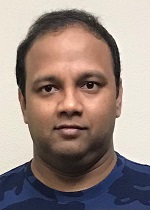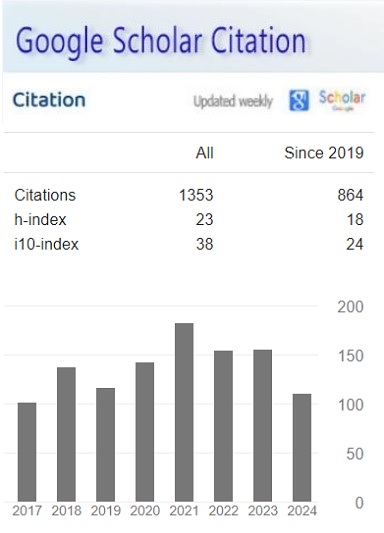Exploring the Symbiosis: Dynamic Programming and its Relationship with Data Structures
Keywords:
Abstract
Dynamic Programming and Data Structures are two cornerstones of computer science and software development. While they are often studied independently, understanding their intricate relationship can lead to more efficient algorithm design and problem-solving. In this article, we will delve into the symbiotic connection between Dynamic Programming and Data Structures, exploring how they complement each other and contribute to the optimization of algorithmic solutions. The field of algorithmic problem-solving is dominated by dynamic programming (DP), recognized for its ability to optimize complex computations. DP is a cornerstone in this field. An investigation into dynamic programming will be carried out in this article, which will dissect its essential ideas and potential applications. In addition to providing a simple explanation, the article dives into the mutually beneficial relationship between Dynamic Programming and various data structures. It sheds light on using arrays, linked lists, trees, graphs, and other data structures to achieve optimal problem-solving. Concrete examples of the application of DP in conjunction with various data structures are provided via real-world case studies. These case studies include the Fibonacci sequence as well as Dijkstra's Algorithm. The article offers a complete guide for developers and fans eager to grasp the full power of Dynamic Programming in conjunction with data structures, which also digs into optimization strategies, obstacles, and future trends.
References
Baddam, P. R. (2017). Pushing the Boundaries: Advanced Game Development in Unity. International Journal of Reciprocal Symmetry and Theoretical Physics, 4, 29-37. https://upright.pub/index.php/ijrstp/article/view/109
Baddam, P. R., & Kaluvakuri, S. (2016). The Power and Legacy of C Programming: A Deep Dive into the Language. Technology & Management Review, 1, 1-13. https://upright.pub/index.php/tmr/article/view/107
Ballamudi, V. K. R. (2016). Utilization of Machine Learning in a Responsible Manner in the Healthcare Sector. Malaysian Journal of Medical and Biological Research, 3(2), 117-122. https://mjmbr.my/index.php/mjmbr/article/view/677
Ballamudi, V. K. R., & Desamsetti, H. (2017). Security and Privacy in Cloud Computing: Challenges and Opportunities. American Journal of Trade and Policy, 4(3), 129–136. https://doi.org/10.18034/ajtp.v4i3.667 DOI: https://doi.org/10.18034/ajtp.v4i3.667
Berkowitz, N. D., Silverman, I. M., Childress, D. M., Kazan, H., Li-San, W. (2016). A Comprehensive Database of High-Throughput Sequencing-Based RNA Secondary Structure Probing Data (Structure Surfer). BMC Bioinformatics, 17. https://doi.org/10.1186/s12859-016-1071-0 DOI: https://doi.org/10.1186/s12859-016-1071-0
Dekkati, S., & Thaduri, U. R. (2017). Innovative Method for the Prediction of Software Defects Based on Class Imbalance Datasets. Technology & Management Review, 2, 1–5. https://upright.pub/index.php/tmr/article/view/78
Dekkati, S., Thaduri, U. R., & Lal, K. (2016). Business Value of Digitization: Curse or Blessing?. Global Disclosure of Economics and Business, 5(2), 133-138. https://doi.org/10.18034/gdeb.v5i2.702 DOI: https://doi.org/10.18034/gdeb.v5i2.702
Desamsetti, H. (2016a). A Fused Homomorphic Encryption Technique to Increase Secure Data Storage in Cloud Based Systems. The International Journal of Science & Technoledge, 4(10), 151-155.
Desamsetti, H. (2016b). Issues with the Cloud Computing Technology. International Research Journal of Engineering and Technology (IRJET), 3(5), 321-323.
Friedl, K., Kabódi, L. (2017). Storing the Quantum Fourier Operator in the QuIDD Data Structure. Acta Cybernetica, 23(2), 503-512. https://doi.org/10.14232/actacyb.23.2.2017.5 DOI: https://doi.org/10.14232/actacyb.23.2.2017.5
Gaillard, J., Peytavie, A., Gesquière, G. (2016). Data Structure for Progressive Visualisation and Edition of Vectorial Geospatial Data. ISPRS Annals of the Photogrammetry, Remote Sensing and Spatial Information Sciences, IV-2/W1, 201-209. https://doi.org/10.5194/isprs-annals-IV-2-W1-201-2016 DOI: https://doi.org/10.5194/isprs-annals-IV-2-W1-201-2016
Goudarzi, M., Asghari, M., Boguslawski, P., Rahman, A. A. (2015). Dual Half Edge Data Structure in Database for Big Data in GIS. ISPRS Annals of the Photogrammetry, Remote Sensing and Spatial Information Sciences, II(2), 41-45. https://doi.org/10.5194/isprsannals-II-2-W2-41-2015 DOI: https://doi.org/10.5194/isprsannals-II-2-W2-41-2015
Hung, L. N., Thu, T. N. T., Nguyen, G. C. (2015). An Efficient Algorithm in Mining Frequent Itemsets with Weights over Data Stream Using Tree Data Structure. International Journal of Intelligent Systems and Applications, 7(12), 20-28. https://doi.org/10.5815/ijisa.2015.12.02 DOI: https://doi.org/10.5815/ijisa.2015.12.02
Kaluvakuri, S., & Lal, K. (2017). Networking Alchemy: Demystifying the Magic behind Seamless Digital Connectivity. International Journal of Reciprocal Symmetry and Theoretical Physics, 4, 20-28. https://upright.pub/index.php/ijrstp/article/view/105
Kaluvakuri, S., & Vadiyala, V. R. (2016). Harnessing the Potential of CSS: An Exhaustive Reference for Web Styling. Engineering International, 4(2), 95–110. https://doi.org/10.18034/ei.v4i2.682 DOI: https://doi.org/10.18034/ei.v4i2.682
Lal, K. (2015). How Does Cloud Infrastructure Work?. Asia Pacific Journal of Energy and Environment, 2(2), 61-64. https://doi.org/10.18034/apjee.v2i2.697 DOI: https://doi.org/10.18034/apjee.v2i2.697
Lal, K. (2016). Impact of Multi-Cloud Infrastructure on Business Organizations to Use Cloud Platforms to Fulfill Their Cloud Needs. American Journal of Trade and Policy, 3(3), 121–126. https://doi.org/10.18034/ajtp.v3i3.663 DOI: https://doi.org/10.18034/ajtp.v3i3.663
Lal, K., & Ballamudi, V. K. R. (2017). Unlock Data’s Full Potential with Segment: A Cloud Data Integration Approach. Technology &Amp; Management Review, 2, 6–12. https://upright.pub/index.php/tmr/article/view/80
Laptev, V. V., Orlov, P. A., Dragunova, O. V. (2017). Visualization of Dynamic Data Structures with Flow Charts in Web Analytics. St. Petersburg State Polytechnical University Journal. Computer Science. Telecommunications and Control Systems, 4. https://doi.org/10.18721/JCSTCS.10401
Li, H., Ji, Y., Luo, G., Mi, S. (2016). A Modular Structure Data Modeling Method for Generalized Products. The International Journal of Advanced Manufacturing Technology, 84(1-4), 197-212. https://doi.org/10.1007/s00170-015-7815-6 DOI: https://doi.org/10.1007/s00170-015-7815-6
Maddali, K., Roy, I., Sinha, K., Gupta, B., Hexmoor, H., & Kaluvakuri, S. (2018). Efficient Any Source Capacity-Constrained Overlay Multicast in LDE-Based P2P Networks. 2018 IEEE International Conference on Advanced Networks and Telecommunications Systems (ANTS), Indore, India, 1-5. https://doi.org/10.1109/ANTS.2018.8710160 DOI: https://doi.org/10.1109/ANTS.2018.8710160
Májeková, M., Paal, T., Plowman, N. S., Bryndová, M., Kasari, L. (2016). Evaluating Functional Diversity: Missing Trait Data and the Importance of Species Abundance Structure and Data Transformation. PLoS One, 11(2), e0149270. https://doi.org/10.1371/journal.pone.0149270 DOI: https://doi.org/10.1371/journal.pone.0149270
Mylona, A., Carr, S., Aller, P., Moraes, I., Treisman, R. (2017). A Novel Approach to Data Collection for Difficult Structures: Data Management for Large Numbers of Crystals with the BLEND Software. Crystals, 7(8), 242. https://doi.org/10.3390/cryst7080242 DOI: https://doi.org/10.3390/cryst7080242
Rohn, E. (2011). Generational Analysis of Tension and Entropy in Data Structures: Impact on Automatic Data Integration and on the Semantic Web. Knowledge and Information Systems, 28(1), 175-196. https://doi.org/10.1007/s10115-010-0314-z DOI: https://doi.org/10.1007/s10115-010-0314-z
Thaduri, U. R. (2017). Business Security Threat Overview Using IT and Business Intelligence. Global Disclosure of Economics and Business, 6(2), 123-132. https://doi.org/10.18034/gdeb.v6i2.703 DOI: https://doi.org/10.18034/gdeb.v6i2.703
Thaduri, U. R., Ballamudi, V. K. R., Dekkati, S., & Mandapuram, M. (2016). Making the Cloud Adoption Decisions: Gaining Advantages from Taking an Integrated Approach. International Journal of Reciprocal Symmetry and Theoretical Physics, 3, 11–16. https://upright.pub/index.php/ijrstp/article/view/77
Vadiyala, V. R. (2017). Essential Pillars of Software Engineering: A Comprehensive Exploration of Fundamental Concepts. ABC Research Alert, 5(3), 56–66. https://doi.org/10.18034/ra.v5i3.655 DOI: https://doi.org/10.18034/ra.v5i3.655
Vadiyala, V. R., & Baddam, P. R. (2017). Mastering JavaScript’s Full Potential to Become a Web Development Giant. Technology & Management Review, 2, 13-24. https://upright.pub/index.php/tmr/article/view/108
Vadiyala, V. R., Baddam, P. R., & Kaluvakuri, S. (2016). Demystifying Google Cloud: A Comprehensive Review of Cloud Computing Services. Asian Journal of Applied Science and Engineering, 5(1), 207–218. https://doi.org/10.18034/ajase.v5i1.80 DOI: https://doi.org/10.18034/ajase.v5i1.80
Downloads
Published
How to Cite
Issue
Section
License
Copyright (c) 2018 Asian Journal of Applied Science and Engineering

This work is licensed under a Creative Commons Attribution-NonCommercial 4.0 International License.








